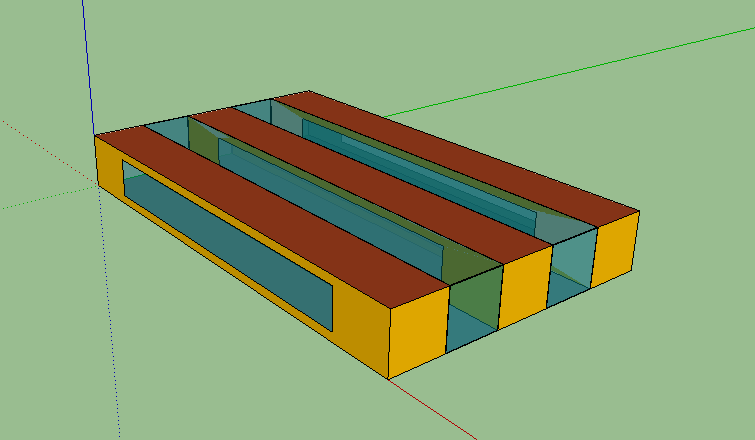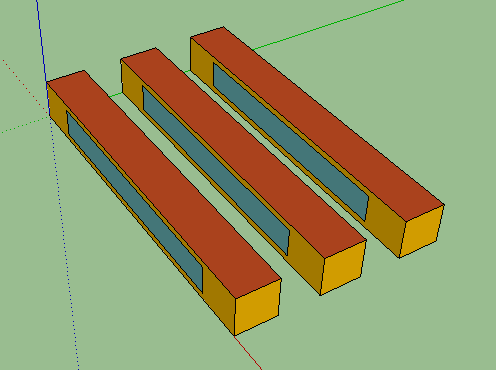



Dear Chiara,
A virtual surface isn’t the appropriate approach.
Virtual surfaces should be used as adjacent surfaces between zones in SketchUp which are merged into one zone with multiple airnodes.
A virtual surface isn’t a heat transfer surface, it doesn’t exist in the thermal model. Thus, the error
message is correct. The volume of the canyon zone isn’t closed and therefore no view factor matrix
could be calculated.
Modelling outdoor space isn’t a straightforward task.
Solution 1
In order to generate a closed volume of the canyon and allow solar radiation to penetrate into the zone
you need a window. To do the shortwave solar correct you may use a so-called “no window” which has a transparency of 100 %.
However, this surface has a temperature and thereby influences the zone air temperature by its inside convections
heat transfer coefficient (HTC) and the longwave exchange by its temperature.
For reducing the influence on the air temperature you may define the inside HTC to be small (like 0.01 kJ/k m²).
For longwave radiation exchange the window temperature should be approximately the sky temperature.
However, you can’t fix a temperature of window. You have to try to calculate a surface gain such that the
Temperature is close and the model is still converging.
Solution 2
You use solution 1 for calculating the incident radiation (total and direct) on the window and use this radiation
as input to a model which doesn’t contain a “canyon zone”. For longwave radiation exchange you have to
estimate the “effective ground temperature”.
All the best
The Transsolar Software Team
______________________________
______________________________ ______________________________ _______
Jakob Merk
TRNSYS Software Team
Transsolar Energietechnik GmbHCuriestraße 2
70563 Stuttgart
Fax: +49 711 67976-11
Email: hotline@transsolar.comWeb: www.trnsys.de
Von: TRNSYS-users [mailto:trnsys-users-bounces@
lists.onebuilding.org ] Im Auftrag von Chiara Colucci
Gesendet: Mittwoch, 6. April 2016 16:49
An: trnsys-users@lists.onebuilding.org
Betreff: [TRNSYS-users] Trnsys17
_______________________________________________
TRNSYS-users mailing list
TRNSYS-users@lists.onebuilding.org
http://lists.onebuilding.org/listinfo.cgi/trnsys-users- onebuilding.org